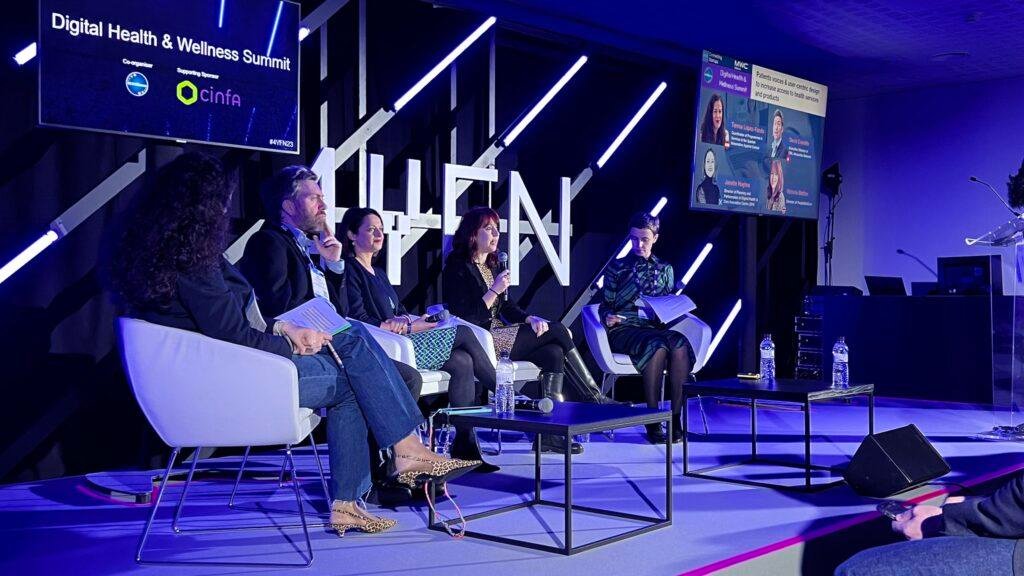- Krishna Yeshwant thinks through health-tech investments with a “foursquare” box.
- It’s a useful way to connect the entrepreneur with the needs of the patient.
- There’s no “one-sized-fits-all” approach to fix health care, in his view.
Krishna Yeshwant, a doctor and investor with GV, Alphabet‘s venture firm, takes a lot of meetings with entrepreneurs that have lofty goals to fix health care.
But different patients have different needs.
So to help entrepreneurs empathize with their users, he came up with a simple, foursquare box that he’ll scrawl on a napkin, in meetings. He drew it for me at HLTH, a major health conference, that happened in Las Vegas earlier this month.
Yeshwant came up with the idea while practicing medicine.
He soon realized that his own patients, many of whom are lower-income and struggling with complex health problems, wouldn’t adopt the same solutions as the tech workers in his Google network.
He also learned in the clinic that social needs shouldn’t be divorced from medical problems; they’re inextricably linked. And entrepreneurs need to keep both in mind, not just the person’s health history.
“It’s hard to get your medicine if your pharmacy keeps changing because you have to keep going to different shelters, and sometimes your shelter is in a new city and you don’t have a car, or a cell phone, or a credit card, or a bank account, or you can’t read or speak English,” he explained.
The key is to build a deep understanding of the user. “It’s hard for someone who hasn’t walked in those shoes to have full empathy for the patient,” he said.
Start-ups in each category
One of the first things he’ll ask the entrepreneur to do is to point to where their product might be in the box. Some are dead on, while others haven’t thought it through.
Here are a few examples of companies that Yeshwant and I would put in each category. This is broadly the case, although there might be exceptions:
- Low medical/low social needs: Virtual doctor apps, concierge primary care, wellness tests (23andMe, Forward, One Medical)
- High medical/low social needs: Cancer tests, expensive therapies and medical devices (ZappRx, Turing Pharmaceuticals, Merck, Pfizer, Medtronic)
- High social/ low medical needs: Services to treat depression in homeless vets, home monitoring tools for seniors that are starting to “age in place,” transportation services to help people get to appointments (PatientPing, Circulation Health, Pear Therapeutics)
- High social/high medical needs: Programs for Medicaid patients to treat diabetes, services to help people without insurance access the medications they need (Cityblock Health, GoodRx, Aledade, CareMore, Iora Health)
According to Yeshwant, far more tech entrepreneurs gravitate to opportunities to serve those with the lowest medical and lowest social needs — essentially their own network. Those with a health background tend to be more eager to tackle the opposite population with the highest medical and social needs, as they’re aware that this group is the biggest driver of health costs.
In his view, venture capital often lean towards the therapeutics companies that fit into the low social complexity/high medical complexity quadrant, such as costly novel drugs for cancer or diabetes. In January, a single therapy to treat a rare form of blindness received a price tag of $850,000.
Who’s left out?
Yeshwant says he’s found companies in all four boxes, but the biggest struggle involves finding investments in the low medical complexity/high social complexity quadrant. It’s particularly hard to find ideas in that quadrant with a strong business model.
He’d particularly like to see more investment in tools and services to support people with substance abuse issues, such as alcohol and opiates, as well as people who struggle with homelessness or transportation gaps.
“We often ignore people in this category because they are young or healthy enough to still be able to cope in shelters or by riding the bus, but their situation is a set-up to move from low medical complexity to high medical complexity when chronic diseases start to set in and they are unable to afford or organize themselves to access basic care,” he said.
Article Source: https://www.cnbc.com/2018/05/19/how-alphabet-gv-investor-krishna-yeshwant-thinks-about-health-tech.html
